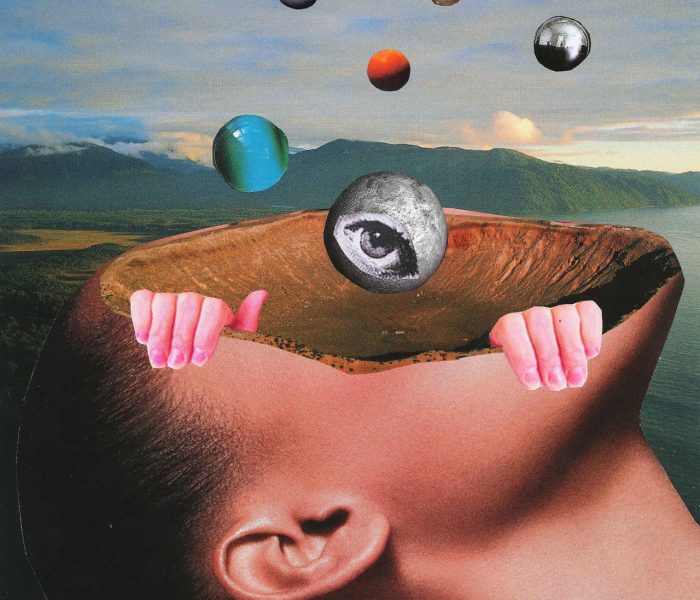In this article you will read about:
Anhedonia, a multifaceted personality trait, plays a significant role in shaping how individuals experience and engage with the world around them. It is characterized by a reduced ability to experience pleasure or interest in activities that would typically be enjoyable. In this article, we will delve into the intricate world of anhedonia, exploring its definition, subtypes, causes, consequences, and potential interventions.
Defining Anhedonia
Anhedonia, a term derived from the Greek words “an,” meaning without, and “hedone,” meaning pleasure, refers to the diminished capacity to derive pleasure or satisfaction from activities and experiences that would typically elicit positive emotions. It is a core feature of various mental health disorders, such as major depressive disorder, schizophrenia, and substance use disorders. Anhedonia can manifest in various ways, including social anhedonia, physical anhedonia, and consummatory anhedonia.
Subtypes of Anhedonia
Consummatory Anhedonia
Consummatory anhedonia refers to the inability to experience pleasure in the moment, even when engaging in activities that were previously enjoyable. Individuals with consummatory anhedonia may report that they no longer find pleasure in their favourite hobbies, music, or social interactions.
Anticipatory Anhedonia
Anticipatory anhedonia involves the inability to experience pleasure or excitement in anticipation of future events or rewards. Those with this subtype may struggle to look forward to positive experiences, making it challenging to motivate themselves or experience positive emotions in advance.
Social Anhedonia
Social anhedonia pertains specifically to the diminished pleasure in social interactions and relationships. Individuals with social anhedonia may find it challenging to connect with others emotionally, leading to a sense of isolation and disconnection from the social world.
"Anhedonia is like a colorless world, where everything loses its vibrancy and appeal. It's an emotional numbness that makes life feel dull and uninteresting."
Anonymous Tweet
Causes of Anhedonia
Anhedonia is a complex personality trait with various underlying causes, including:
1. Neurochemical Imbalance
Dysregulation of neurotransmitters such as dopamine and serotonin can contribute to anhedonia. These chemicals play a crucial role in reward and pleasure pathways in the brain.
2. Genetic Factors
Genetic predispositions can influence an individual’s susceptibility to anhedonia. Some individuals may inherit genetic traits that make them more prone to experiencing diminished pleasure.
3. Psychological Factors
Trauma, chronic stress, or unresolved emotional issues can lead to anhedonia. These psychological factors may disrupt an individual’s ability to experience pleasure.
4. Mental Health Disorders
Anhedonia is often a symptom of mental health conditions, including depression, bipolar disorder, and schizophrenia. In these cases, it may be a primary diagnostic criterion.
Expert Opinions
"Understanding anhedonia is a crucial step towards regaining the capacity to experience joy and pleasure in life's simple pleasures."
Emily Roberts, Clinical Psychologist Tweet
"Anhedonia can be a silent struggle, but it's essential to remember that help and support are available for those who seek it."
John Miller, Psychiatrist Tweet
Consequences of Anhedonia
The consequences of anhedonia can be far-reaching and impact various aspects of an individual’s life:
1. Impaired Relationships
Social anhedonia can strain personal relationships, making it difficult for individuals to connect with others emotionally. This may lead to social isolation and loneliness.
2. Reduced Motivation
Anticipatory anhedonia can result in reduced motivation to pursue goals and engage in activities. Individuals may struggle to find meaning in their actions, affecting their overall quality of life.
3. Poor Mental Health
Anhedonia is often associated with mood disorders such as depression, which can have detrimental effects on an individual’s mental health and well-being.
4. Substance Abuse
Some individuals may turn to substances like drugs or alcohol in an attempt to alleviate the emotional numbness caused by anhedonia, leading to substance abuse issues.
Interventions for Anhedonia
While anhedonia can be challenging to overcome, there are interventions and strategies that individuals can employ to manage this personality trait:
1. Psychotherapy
Cognitive-behavioral therapy (CBT) and psychodynamic therapy can help individuals explore the underlying causes of anhedonia and develop strategies to regain a sense of pleasure and motivation.
2. Medication
In cases where anhedonia is associated with mood disorders, medications such as antidepressants or antipsychotics may be prescribed to address the underlying condition.
3. Lifestyle Changes
Engaging in regular exercise, maintaining a balanced diet, and ensuring adequate sleep can help regulate neurotransmitters and improve mood.
4. Mindfulness and Meditation
Mindfulness practices can help individuals reconnect with the present moment and cultivate a greater sense of awareness and acceptance, potentially reducing anhedonia.
5. Support Groups
Joining support groups or engaging in social activities with peers who understand the challenges of anhedonia can provide valuable emotional support and reduce feelings of isolation.
Anhedonia Book Recommendations
Here is a collection of the best books on the market related to anhedonia:
Our commitment to you
Our team takes pride in crafting informative and well-researched articles and resources for our readers.
We believe in making academic writing accessible and engaging for everyone, which is why we take great care in curating only the most reliable and verifiable sources of knowledge. By presenting complex concepts in a simplified and concise manner, we hope to make learning an enjoyable experience that can leave a lasting impact on our readers.
Additionally, we strive to make our articles visually appealing and aesthetically pleasing, using different design elements and techniques to enhance the reader’s experience. We firmly believe that the way in which information is presented can have a significant impact on how well it is understood and retained, and we take this responsibility seriously.
Click on the icon to see all your thoughts in the Dashboard.
Your Thoughts about Anhedonia
It’s highly recommended that you jot down any ideas or reflections that come to mind regarding anhedonia, including related behaviours, emotions, situations, or other associations you may make. This way, you can refer back to them on your Dashboard or Reflect pop-ups, compare them with your current behaviours, and make any necessary adjustments to keep evolving. Learn more about this feature and how it can benefit you.
References
Treadway, M. T., & Zald, D. H. (2011). Reconsidering anhedonia in depression: Lessons from translational neuroscience. Neuroscience & Biobehavioral Reviews, 35(3), 537-555.
Gard, D. E., Gard, M. G., Kring, A. M., & John, O. P. (2006). Anticipatory and consummatory components of the experience of pleasure: A scale development study. Journal of Research in Personality, 40(6), 1086-1102.
Loas, G., Dubal, S., Perot, P., Tirel, F., Nowaczkowski, P., & Pierson, A. (2007). Validation of the French version of the Temporal Experience of Pleasure Scale (TEPS): Relationships between TEPS and depression and anhedonia. The European Journal of Psychiatry, 21(2), 129-136.
Gable, S. L., & Berkman, E. T. (2008). Making connections and avoiding loneliness: Approach and avoidance social motives and goals. In J. Y. Shah & W. L. Gardner (Eds.), Handbook of Motivation Science (pp. 316-329). Guilford Press.




